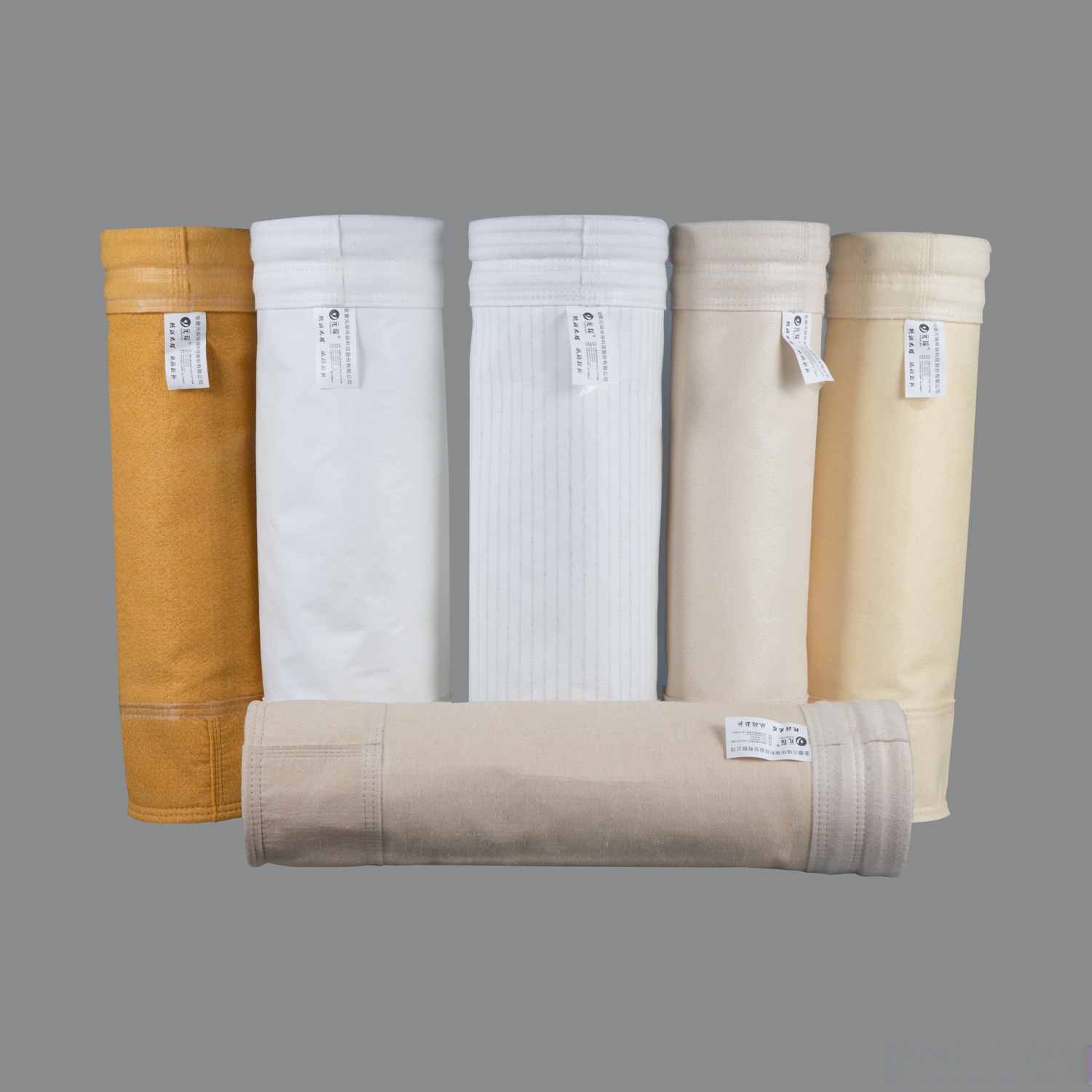Dust collection filter bags are the core components of bag filters, primarily used to filter dust particles from dusty gases and achieve air purification. Below is a detailed introduction to dust collection filter bags:
I. Material Classification and Characteristics
-
Normal-Temperature Filter Bags
- Materials: Polyester, polypropylene, acrylic, etc.
- Features: Good breathability, smooth surface, easy dust 剥离,suitable for general industrial dust removal (temperature ≤ 120°C).
-
Medium-Temperature Filter Bags
- Materials: Aramid fibers, PPS (polyphenylene sulfide), etc.
- Features: Treated for water, oil, and corrosion resistance, adapted to complex working conditions (temperature ≤ 200°C).
-
High-Temperature Filter Bags
- Materials: P84, expanded glass fiber, PTFE (polytetrafluoroethylene), etc.
- Features: Strong thermal stability, excellent acid and alkali resistance, suitable for high-temperature flue gas (temperature ≤ 280°C).
II. Application Fields
- Industrial Dust Removal: Steel, cement, power, chemical, coking, and other industries.
- Environmental Protection Projects: Waste incineration, sewage treatment, flue gas purification from coal-fired boilers.
- Other Scenarios: Mining, food processing, woodworking, electronics industry, and other dust 治理.
III. Selection Factors
- Working Conditions: Temperature, humidity, dust particle size, and chemical properties.
- Filtration Efficiency: Choose micron-to-nanometer precision based on requirements.
- Dust Cleaning Method: Pulse jet, mechanical vibration, etc., affecting filter bag lifespan.
- Equipment Compatibility: Filter structure, installation method, and maintenance costs.
IV. Quality Judgment and Craftsmanship
- Material Quality: Key indicators include high-temperature resistance, air permeability, and filtration accuracy.
- Manufacturing Process: Produced in a clean environment with singeing and calendering to prevent fiber shedding.
- Sealing Performance: Poor sewing may lead to dust leakage and reduced efficiency.
V. Maintenance and Care
- Regular Dust Cleaning: Prevent dust accumulation to reduce resistance and extend lifespan.
- Damage Inspection: Replace aged or damaged bags promptly to avoid secondary pollution.
- Operating Control: Avoid over-temperature and over-pressure operation to minimize wear.
VI. Common Types
- Polyester Filter Bags: Cost-effective, suitable for normal-temperature conditions.
- Glass Fiber Filter Bags: High-temperature resistance but require corrosion protection.
- PPS Filter Bags: Acid and alkali resistance, ideal for harsh environments like coal-fired power plants.
- PTFE Membrane Filter Bags: High-precision filtration for ultrafine dust.
Choosing the right dust collection filter bag requires comprehensive consideration of working conditions and material properties to ensure efficient purification and long-term stable equipment operation.
Post time: Mar-14-2025
